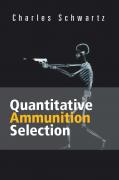OK, so here's a constructive idea if you're so inclined....
If you really, truly wish to establish some sort of correlation to the terminal ballistic behavior (expansion and depth of penetration) in both your new 15% iteration of the CBG product and properly prepared shear-validated 10% ordnance gelatin, why not go straight to the horse' mouth, JCN?
When you test the 15% iteration of the CBG product and 10% ordnance gelatin why not perform a direct test comparison between the two by firing the same number of rounds of the same ammunition into each material?
That way, you have data that is free of variability that might be introduced by using someone else's data (you've seen how that works with the tabular BrassFetcher stuff) and you could vary the fraction of the CBG 10% and 20% products to correlate to a known, proven, repeatable (BB penetration between 8.5 ± 0.4 cm at 591 ± 13fps) standard— 10% ordnance gelatin.
But now, here's where you get your mind blown, friend... (drum roll, please...)
Because Fackler states that there is no need to use anything more than BB calibration to verify/confirm the validity of the ordnance gelatin test block, there is no need to mess with the expense and hassle of mixing up all of that 10% ordnance gelatin into which you will need to fire a fortune's worth of JHPs to get your answer because all you really need to do is determine the correct titration of the two CBG products it takes to reproduce the BB penetration between 8.5 ± 0.4 cm at 591 ± 13fps that it takes to confirm the validity of the medium. There's your test design.

And, BBs are far, far, far cheaper than ammunition.
Science!




 Reply With Quote
Reply With Quote


